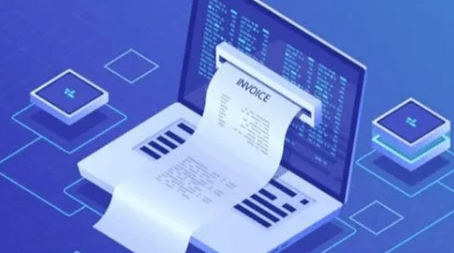Beginner Guide to Cybersecurity: Fundamentals, Tools & Best Practices
Introduction
In today’s digital world, cybersecurity isn’t optional—it’s essential. Every time you browse, shop online, use a smartphone, or store data in the cloud, you’re exposed to risks like hacking, data breaches, phishing, ransomware, identity theft, and more. For beginners, cybersecurity may feel overwhelming: there are many concepts, tools, and practices, and attackers seem to evolve every day.
This beginner guide to cybersecurity is designed to help you understand the core principles, terminology, common threats, and essential protection strategies. We’ll cover what cybersecurity means, why it matters, threats you should know, basic defenses, and how to build good habits. This article also emphasizes E-E-A-T (Experience, Expertise, Authoritativeness, Trustworthiness) by relying on recognized frameworks, using clear examples, and pointing to best practices acknowledged in the security community.
By the end, you’ll have the foundation to protect yourself (or your organization), make informed decisions, and grow in confidence as you navigate this rapidly changing field.
What is Cybersecurity?
Cybersecurity refers to the practices, technologies, and processes that protect computers, networks, programs, and data from attack, damage, or unauthorized access. It covers both preventive and reactive controls, including detection and recovery. Key pillars often include:
- Confidentiality: Ensuring data is accessible only to those authorized to see it.
- Integrity: Making sure that data isn’t tampered with, altered, or corrupted.
- Availability: Ensuring systems and data are accessible when needed.
These are sometimes called the CIA Triad.
Why Cybersecurity Matters
- Cyber threats cost trillions globally each year.
- As more of our lives go online, sensitive data (financial, health, personal) becomes a target.
- For businesses, cost isn’t only financial—reputation, legal compliance, business continuity suffer too.
- Individuals can lose money, privacy, identity; businesses risk losing customer trust and even face regulatory penalties.
Common Threats & Terminology
Here are things you should know—the threats and terms encountered by beginners:
| Term | Definition / Significance |
|---|---|
| Malware | Malicious software (viruses, worms, trojans, ransomware) designed to damage or gain unauthorized access. |
| Phishing | Deceptive attempts (often via email) to trick people into giving up sensitive data. |
| Social engineering | Manipulating people (rather than exploiting software) to breach security (e.g. impersonation, pretexting). |
| Firewall | A network or system barrier that filters traffic based on security rules. |
| Encryption | Technique to make data unreadable to unauthorized parties; protects confidentiality. |
| Virtual Private Network (VPN) | Creates a secure, encrypted connection over insecure networks, hiding your real location and data in transit. |
Fundamental Cybersecurity Principles & Best Practices
To build a strong base, beginners should adopt these core practices:
- Strong, Unique Passwords
Use long passwords (12+ characters) with a mix of letters, numbers, symbols. Avoid reuse. Consider a password manager. - Multi-Factor Authentication (MFA or 2FA)
Adds extra layer beyond password (e.g., code via phone or authenticator app). Even if password is compromised, attacker still blocked. - Keep Software & Systems Updated
Many attacks exploit known vulnerabilities. Updates patch security holes. - Safe Online Habits
Be cautious of unknown links/attachments, avoid untrusted Wi-Fi or public networks without protection, verify sites are using HTTPS, avoid oversharing. - Backup Important Data
Regularly back up your files offline or to trusted cloud. In case of data loss (hardware failure, ransomware), you have recovery options. - Use Antivirus / Endpoint Protection
Tools that scan, detect, and block threats on your device or network. They’re not perfect, but part of layered defense. - Network Security Measures
Use firewalls, secure your WiFi (strong encryption like WPA2/WPA3), change default router passwords, disable remote management if unnecessary. - Learn the Basics of Networking & Operating Systems
Understanding how networks work, what protocols are, how operating systems function helps in recognizing how attacks occur and how to protect against them.
Learning Path & Skills
If you want to move from beginner to someone who can work in cybersecurity or at least competently protect yourself, here’s a suggested path:
| Stage | What to Focus On |
|---|---|
| Foundation | Basics of computers, operating systems (Linux & Windows), networking (TCP/IP, DNS, HTTP), security terminology. |
| Hands-On Practice | Use labs, virtual machines, platforms like TryHackMe, Hack The Box. Build mini projects: set up firewalls, simulate attacks. |
| Certifications & Formal Learning | Entry-level certs like CompTIA Security+, perhaps courses via Coursera, edX, free resources. |
| Specialization | Once basics are solid, explore fields like ethical hacking / penetration testing, digital forensics, incident response, cloud security, IoT security etc. |
| Community & Ethics | Join cyber security forums, meetups. Follow ethical guidelines. Understand privacy, law, compliance. Trust & authoritativeness matter. |
Evolving Threats & Trends to Watch
Even as you begin, being aware of new and emerging risks helps you stay prepared:
- Ransomware remains a big threat: attackers encrypt data and demand payment.
- IoT vulnerabilities: more devices online (smart home, wearables), often with weak security.
- Phishing & deepfake / social engineering attacks are getting more sophisticated.
- Supply chain attacks: attackers infiltrate less secure third-party systems to get to major targets.
- Cloud security risks: misconfigured cloud services, insecure APIs.
Ethics, Compliance & Trustworthiness
As you get deeper into cybersecurity, or if you’re protecting others or working professionally, you must understand:
- Privacy laws & regulations: GDPR, data protection laws in your country.
- Ethical behavior: don’t use knowledge to do harm. Responsible disclosure.
- Trustworthiness: using tools that are legitimate, sourcing tools / libraries safely.
- Responsible reporting: if you discover vulnerabilities, how to report them properly.
Conclusion
Cybersecurity starts with awareness and builds through learning, hands-on experience, and consistent best practices. For beginners, understanding threats such as malware, phishing, social engineering, and weak passwords is just as important as knowing how to protect yourself with strong authentication, frequent updates, backups, and safe network configurations. Building skills in networking and operating systems, practicing in safe lab environments, and pursuing entry-level certifications can set the foundation for more advanced learning and specialization.
Above all, trustworthiness, ethics, and adaptability are vital. As cyber threats evolve, your approach should evolve too—maintaining a mindset of continuous learning and vigilance. By applying the guidance in this beginner guide to cybersecurity, you’ll not only safeguard your digital life but also position yourself to go deeper—whether for career growth or to support your personal, educational, or business goals. Stay curious, stay cautious, and stay secure.
FAQs (People Also Ask)
- What is cybersecurity and why is it important for beginners?
Cybersecurity means protecting your digital devices, data, and online activities from threats like hacking, malware, identity theft. For beginners, it’s important to build basic skills and foundational understanding so you can avoid common mistakes that lead to breaches or loss of data. - What are the first steps I should take to improve my online security?
Use strong unique passwords (consider a password manager); enable multi-factor authentication; keep software and operating systems updated; avoid clicking suspicious links/attachments; backup data; secure your WiFi and router settings. - Do I need to know programming or networking to get started in cybersecurity?
Basic knowledge of networking (how the internet works, protocols like TCP/IP, DNS) and some operating system concepts helps a lot. Deep programming skills are not mandatory at first, but helpful especially if you move toward roles like ethical hacking, malware analysis, or security engineering. - What certifications are good for beginners in cybersecurity?
Entry-level certifications like CompTIA Security+, Certified Ethical Hacker (CEH) (for those interested in penetration testing), Cisco CCNA Security, or vendor-neutral ones offered by reputable organizations. These help demonstrate knowledge and can improve job prospects. - How long does it take to become competent in cybersecurity from scratch?
It depends on time invested, background, and learning style. For someone with little tech background, getting solid basics might take 6-12 months with consistent effort. For specializations or advanced roles, perhaps 1-2 years or more, including hands-on experience.







